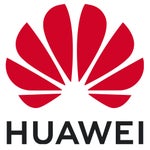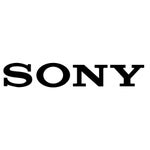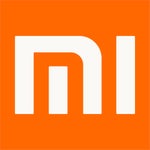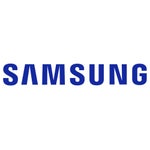News
iPhone Fold Specs Leak: Mixed-Material Frame and Display Sizes Revealed for 2026 Launch
iPhone Fold Specs Leak: Mixed-Material Frame and Display Sizes Revealed for 2026 Launch
Apple's highly anticipated foldable iPhone is taking shape with groundbreaking design details emerging from industry insiders. The iPhone Fold will feature an innovative mixed-material frame combining titanium and aluminum, positioning it as Apple's most ambitious smartphone project yet.
Revolutionary Mixed-Material Design Breaks Apple Tradition
Apple's first foldable iPhone will mark a significant departure from the company's traditional single-material approach, according to recent investor notes from prolific Apple analyst Jeff Pu. The iPhone Fold will utilize a sophisticated combination of titanium and aluminum throughout its frame structure, creating what could be the most durable foldable smartphone ever produced.
This design strategy represents a fascinating evolution in Apple's material philosophy. The Pro iPhone lineup previously transitioned from stainless steel to titanium before reverting to aluminum with this year's iPhone 17 Pro and Pro Max models. However, the iPhone Fold's dual-material approach suggests Apple is prioritizing both structural integrity and weight optimization for its groundbreaking foldable form factor.
The mixed-material framework offers several key advantages:
-
Enhanced durability where stress concentration is highest
-
Optimized weight distribution across the foldable mechanism
-
Superior resistance to the unique stresses of repeated folding
-
Premium aesthetics matching Apple's luxury positioning
For comparison with Apple's current iPhone lineup and specifications, you can explore their official iPhone page to understand how the iPhone Fold will differentiate from traditional smartphone designs.
Display Specifications That Redefine Mobile Experience
The iPhone Fold's display configuration represents a carefully calculated balance between portability and productivity. Industry sources confirm the device will feature a 5.5-inch external display paired with a 7.8-inch main folding screen. This sizing strategy positions the iPhone Fold as more compact than Samsung's Galaxy Z Fold 7, which offers an 8-inch internal display and 6.5-inch outer screen.
When unfolded, the iPhone Fold's 7.8-inch display approaches iPad mini territory, delivering tablet-class real estate in a pocketable form factor. The external 5.5-inch screen mirrors the beloved iPhone 6 Plus display size, ensuring familiar one-handed usability when the device remains closed.
Display Technology Specifications:
-
Inner Screen: 7.8-inch LTPO OLED with 120Hz ProMotion
-
Outer Screen: 5.5-inch LTPO OLED with 120Hz refresh rate
-
Resolution: 2460x2180 pixels (inner), optimized for dual-screen workflows
-
Crease Technology: Samsung Display's revolutionary crease-free solution
Crease-Free Innovation Sets New Industry Standard
Perhaps the most significant technological breakthrough lies in the iPhone Fold's display engineering. Apple has partnered exclusively with Samsung Display to deliver what industry experts are calling the first truly "crease-free" foldable screen. This represents a major departure from Apple's typical approach of customizing every component, instead choosing Samsung's proven solution to ensure stable mass production.
The crease-elimination technology relies on sophisticated metal plate integration that distributes bending stress more effectively than current foldable implementations. Fine M-Tec, Samsung's key supplier, will provide specialized internal hinges featuring laser-drilled microstructures that guide stress distribution and enhance crease resistance. These components, priced between $30-35 per unit, represent cutting-edge engineering in foldable display technology.
Production Timeline Points to Fall 2026 Launch
Manufacturing momentum is building rapidly for the iPhone Fold, with multiple production milestones aligning for a 2026 release. Foxconn is scheduled to begin official production in late Q3 2025 (September) or early Q4 2025 (October). Samsung Display has already commenced mass production of foldable panels, with initial shipments expected to reach 13-15 million units in 2026.
Key Production Milestones:
-
June 2025: P1 (Prototype 1) development began
-
Q4 2025: Foxconn assembly line activation
-
Q1 2026: Fine M-Tec hinge component shipments begin
-
Fall 2026: Expected iPhone Fold launch alongside iPhone 18 series
Apple's conservative initial production target of 6-8 million units reflects both the technical complexity and premium pricing strategy for this groundbreaking device.
Authentication Revolution: Touch ID Returns to Premium iPhone
In a surprising move that breaks with recent iPhone tradition, the iPhone Fold will abandon Face ID in favor of Touch ID integration. This decision stems from the ultra-thin 4.5mm unfolded profile, which simply doesn't accommodate Face ID's sensor array. The Touch ID implementation will utilize a side-mounted power button with integrated fingerprint scanning, mirroring the current iPad Air approach.
This authentication strategy offers several practical advantages for foldable usage patterns. Users can unlock the device regardless of which screen they're accessing, and the side-button placement ensures consistent functionality whether the device is folded or unfolded.
iOS 27: Software Built for Foldable Innovation
Apple's software strategy for the iPhone Fold extends beyond hardware specifications. iOS 27 will prioritize features specifically tailored for the foldable form factor, according to Bloomberg's Mark Gurman. This specialized software approach will likely incorporate elements from iPadOS to optimize the large 7.8-inch unfolded screen experience.
Expected iOS 27 foldable features include:
-
Seamless transition between cover and main displays
-
Enhanced multitasking with windowed app support
-
Split-screen functionality optimized for the 7.8-inch display
-
Custom app layouts that adapt to folding states
Premium Pricing Reflects Cutting-Edge Technology
The iPhone Fold's revolutionary design comes with premium pricing that positions it as Apple's most expensive smartphone ever. Industry analysts predict a $2,000-$2,500 price range, with most estimates centering around $2,100-$2,300. This pricing strategy places the iPhone Fold above Samsung's Galaxy Z Fold 7 ($2,000) and Google's Pixel 9 Pro Fold ($1,800), but delivers superior build quality and Apple's ecosystem integration.
The premium positioning reflects genuine technological advancement rather than arbitrary luxury pricing. The mixed-material frame, crease-free display technology, and specialized iOS optimization justify the substantial investment required for Apple's foldable entry.
Competitive Positioning Against Established Foldables
Apple's strategic timing allows the iPhone Fold to benefit from seven years of foldable market evolution. While Samsung pioneered the category with 79% market share, Apple's entry could catalyze mainstream adoption through superior engineering and ecosystem integration. The iPhone Fold's compact 7.8-inch display targets users seeking tablet functionality without the bulk of larger foldables.
iPhone Fold vs Competition:
|
Feature |
iPhone Fold |
Galaxy Z Fold 7 |
Pixel 9 Pro Fold |
|
Inner Display |
7.8-inch |
8.0-inch |
8.0-inch |
|
Outer Display |
5.5-inch |
6.5-inch |
6.3-inch |
|
Authentication |
Touch ID |
Fingerprint |
Fingerprint |
|
Price |
$2,000-$2,500 |
$2,000 |
$1,800 |
|
Crease |
Crease-free |
Minimal |
Visible |
Market Impact and Industry Transformation
The iPhone Fold represents more than a new product category for Apple—it signals a fundamental shift in smartphone evolution. JPMorgan forecasts the device will achieve 45 million unit sales by 2028, potentially making Apple the global leader in foldable smartphones despite entering the market seven years after Samsung.
Apple's entry is expected to legitimize foldables for mainstream consumers who have remained skeptical of durability and practicality concerns. The combination of crease-free technology, mixed-material durability, and iOS optimization addresses the primary barriers that have limited foldable adoption.
The iPhone Fold's September 2026 launch alongside the iPhone 18 series will mark Apple's boldest hardware innovation since the iPhone X, potentially reigniting upgrade cycles and establishing new industry standards for foldable device engineering.
Related Articles












